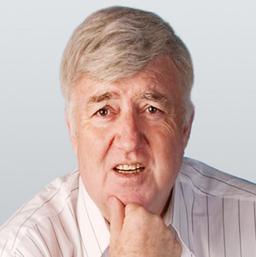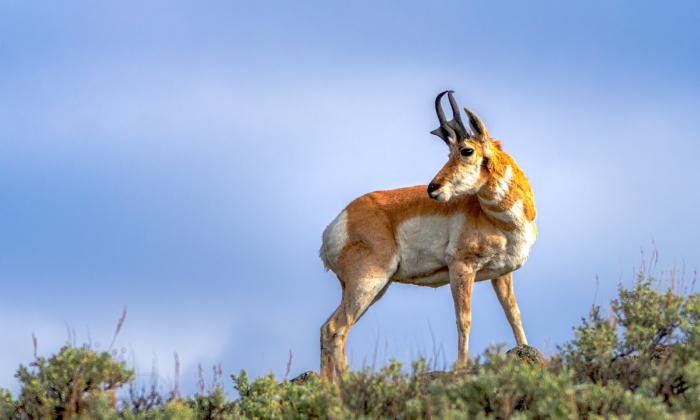When I first visited New Zealand many years ago and a friend asked me my impressions, my response was this: What most distinguishes New Zealand from so many other scenic places is not only its abundance of spectacularly beautiful sights, but also its shortage of unattractive places.
It’s just not the sort of place where one minute your breath is taken away from looking at stunning scenery and then you turn a bend and find yourself getting an eye full of ugly.

New Zealand is such a pleasant and lovely land with so many pluses and next to no minuses. It’s long been one of my favorite places in the world. Now I love Australia, too, but I’ve never forgotten something an Aussie friend once told me: “Of the 20 most deadly snakes in the world, Australia only has 18 of them.” Typically Aussie humorous way of looking at things.
New Zealand has no snakes. No poisonous insects. No poisonous plants. No dangerous wildlife.
“But we do have three pests,” a guide told us last time I visited New Zealand, “and all three were introduced here from Australia.” Really? “Yes. The rabbits are a bit of a nuisance. So are the ‘possum. But it’s the third pest that really bothers us.” Of course, someone promptly inquired what was the third pest introduced from Australia. “Australian rugby players.”
Kiwis, as New Zealanders are affectionally called after their rarely seen nocturnal bird (which lives in no other country), seem to share a similar sense of humor with Aussies and they love using it on one another.
During a re-visit focused on re-seeing some of the highlights of this country I find so special, my first stop was Auckland, the usual place of entry for overseas visitors.
New Zealand’s largest city—it’s home to nearly one-third of the country’s population of 4 million—Auckland is surrounded by sweeping expanses of water. With scenic hills and woods all around, it is positioned on a very narrow isthmus that separates two splendid harbors. It has the highest number of boats per capita in the world, giving it its nickname: “City of Sails.”

Our tour included a Pride of Auckland evening harbor sail, complete with a fine seafood dinner; a visit to the top of a volcanic cone, Mount Eden, for a panoramic view; shopping in Parnell Village, a mile-long historic area and upscale little oasis known for its maze of stylish boutiques; plus free time, which we used to take a daytime ferry ride to Devonport, a pleasant seaside village with craft shops and sidewalk cafes a few minutes’ ride across the harbor.
Leaving Auckland and heading south aboard a luxury bus, we arrived two hours later at Waitomo, renowned for its spectacular caves, especially its Glowworm Caves, where thousands of Waitomo glowworms, found only in New Zealand, luminesce overhead as you glide slowly through dark grottoes in a small boat.
A short and scenic ride farther southeast, Rotorua welcomes you with whiffs of sulfur. But soon you cease to notice the sulfur. This small town is home to one of the world’s few geyser sites and the most popular tourist destination on New Zealand’s North Island.

Besides spas offering thermal waters and mud baths, Rotorua is home to two outstanding tourist shows. The Agrodome Sheep Show turns such Kiwi farming activities as the shearing and herding of sheep into showbiz that is fun and educational for all ages. The Agrodome is also one of the best places in New Zealand or Australia to buy wool products.

Tamaki Maori Village, an evening cultural show of song, dance, and storytelling about life in pre-European New Zealand, was created by and is owned and operated by indigenous Polynesians from Rotorua. Rotorua is New Zealand’s Maori center; about 40 percent of the city population is Maori. The show includes a hangi, a delicious traditional Polynesian banquet of foods cooked over hot rocks in an earthen oven.

The main courses may have been traditional Maori, but the main after-dinner treat was the New Zealand national dessert, pavlova. We love it. It’s a fluffy, feather-light whipped concoction made of egg whites and sugar, crisp on the outside but soft on the inside and covered with fresh fruits, including strawberries, passion fruit, and kiwi fruit, and then whipped cream, then more fresh fruit. Aussies claim they invented the pavlova and that the Kiwis copied it. Kiwis say the Aussies just wish they created it. Like their ribbings over rugby, the pavlova dispute is never-ending.
A tour among the geysers and mud pools also was part of our program, as was a visit to Rainbow Springs, with its sparkling clear streams full of trout and an enclosure where you can view kiwi birds in a nocturnal environment.

Our tour operator—Goway, which will customize tours—offered the options of a free day to explore more attractions in the Rotorua area on your own or a farm stay with a Kiwi family. We had never before done the latter, and we thoroughly enjoyed the experience of dining, talking and laughing with our delightful dairy-farming hosts, Jim and Barbara Hitchcock. We also learned that in this country, where sheep outnumber people 10 to 1, the dairy industry is larger than the sheep industry.

Abundance of Beauty
A short flight brought us to the South Island’s Queenstown, a resort area in a spectacular setting on an inlet at the north end of a long lake with views across the water to the Remarkables, an aptly named mountain range. Some Kiwis claim popularity has caused Queenstown to grow too large—its population stands at about 16,000, although it remains a delightful small town.
We looked around this area before and after touring some of the bottom of the South Island, including Fiordland National Park, where we took a cruise on 10-mile-long Milford Sound, one of the most scenic places in this country renowned for its scenery. Again, what most distinguishes New Zealand from many other scenic places is not only its abundance of spectacularly beautiful sights, but also its shortage of unattractive places.
Last stop on our New Zealand tour was the South Island’s largest city, Christchurch, a garden city of 370,000 people, often called the most English city outside England. Things to do here include touring its renowned Botanic Gardens; sightseeing from aboard the Christchurch Gondola; the Christchurch Tram Tour; and dinner on Tramway Restaurant, a 2.5-hour evening dining and sightseeing experience.

Rather than drive directly from Queenstown to Christchurch I opted for a roundabout route that includes my favorite drive in New Zealand. At the junction of State Highway 8, Highway 80 follows along the length of Lake Pukaki 34 miles all the way to Mount Cook National Park. It’s a wonderfully pleasant scenic drive. I’ve never been able to drive in either direction without frequently pulling over to photograph views. Fortunately, the two-lane road is lightly traveled.
Lake Pukaki has the most unusual shades of blue of any lake I’ve ever seen. Nearby Lake Tekapo, which I checked out before heading to Christchurch, comes close to having equally interesting shades.

Savoring the scenic vistas while driving toward Christchurch across the lowland area of east-central South Island known as the Canterbury Plains, I was once again struck by how incredibly green New Zealand is. And I remembered that the first time I visited years ago a Kiwi told me that when a New Zealand farm becomes rundown they let it become a golf course. It’s that green—so green you’d almost believe that’s true.
Fred J. Eckert is a retired U.S. ambassador and former member of Congress. His writings have appeared in many leading publications, including Reader’s Digest and The Wall Street Journal. He is also an award-winning photographer whose collection of images spans all seven continents.If You Go
Best time to go: Remember, Down Under seasons are the reverse of northern hemisphere countries. But for visiting places mentioned in this article, pretty much any time of year is a good time to go.
Information: Most leading tour operators cover New Zealand. My tour described in this feature was done through Goway (Goway.com, 800-557-2841). They’re outstanding.
Safety: New Zealand is generally considered to be one of the safest travel destinations in the world, and Kiwis are also considered to be among the world’s most hospitable and friendly people.
Travel tip for peace and quiet: We wouldn’t think of flying, especially on a long trip, without our Bose noise-canceling headphones. They really do block out a great amount of annoying and distracting noises and you can also use them to experience better sound for the in-flight movie or CDs, DVDs, or MP3s. (Bose.com, 800-379-2073)
Travel tip for peace of mind: If you ever had to be medically evacuated while traveling, it could cost you tens of thousands of dollars. Many plans that claim they cover this fall far short. My wife and I cover ourselves against this with membership in MedjetAssist (MedjetAssist.com, 800-527-7478).
Guidebooks: Fodor’s guides are always outstanding and their guide to New Zealand is as good as guides get—very comprehensive and very dependable. Always take along a DK Eyewitness Travel Guide for any destination. Their highlights at a glance and three-dimension appearing maps alone make them worth buying—and their great photography make them nice mementos of your trip.
Entry documents: U.S. citizens do not need a visa for New Zealand. For anyone who does need a visa your tour operator should be able to handle this for you.






